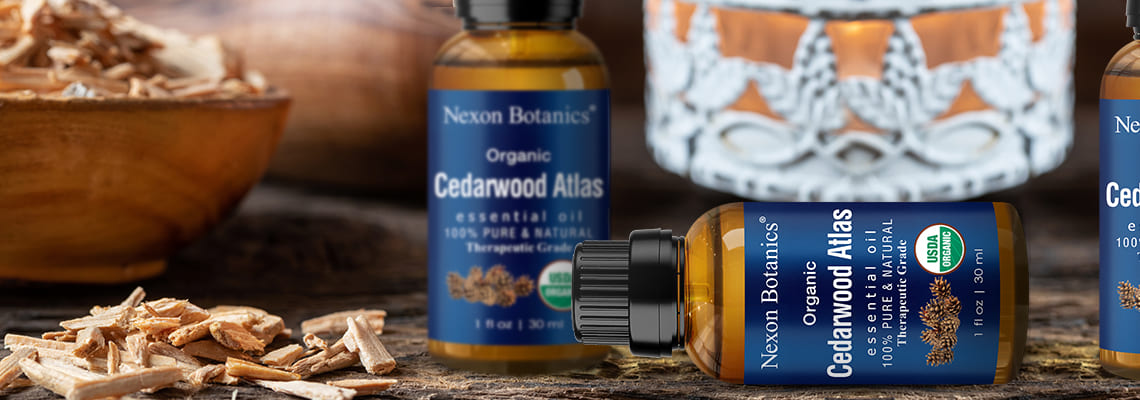
Learn to Blend Essential Oils Aromatically and Therapeutically: A Guide
Every person you meet in life brings out a different shade of your personality that you didn't know you had in you before them. The same is the case with essential oil blending. Each essential oil interacts with the attributes of another essential oil so that the byproduct is an entirely different aroma with unique effects. For instance: The lavender and frankincense blend promotes deep sleep and rest, and the lavender and peppermint combination gives off a bright and fresh scent that boosts energy levels and focus. That is the beauty of blending essential oils.

You can blend essential oils for aromatic or therapeutic benefits. Either way, blending essential oils is not less than art. To learn this art, you got to have the basic knowledge of proportion, fragrant notes, essence, and the capabilities of essential oils.
Let us dive into the essential oil blending world and show how to blend for your desired purpose.
How To Blend Essential Oils Aromatically
Aromatic blending is a creative endeavor that requires precision, intuition, and understanding of combination possibilities. The goal is to create a blend that provides holistic benefits, harmonious scent, and rewarding effects.
Blending the aromas begins with learning the composition of a fragrance. Be it of perfumes, blends, or mists; a fragrance has three notes, namely, the top, middle, and base. These notes combine to produce a unified, lasting, and enticing aroma that provides you with visceral and profound experience. Here is how you identify the fragrant notes of essential oils:
- Top Note: The top note is the first scent you smell in a blend or perfume. It lasts for a very short time, evaporates quickly, and usually has a sharp, crispy, and light aroma. The essential oils in the top note category have highly volatile compounds such as limonene and linalool. Examples of top note essential oils are:
- Lemon Oil, Orange Oil, Lavender Oil, Eucalyptus Oil, Rosemary Oil
- Middle Note: This fragrant note lingers longer than the top note. It usually has a soft, balanced, and pleasant aroma that connects the top and base notes. Middle note oils provide richness, coordination, and depth to a fragrance, and therefore the middle note takes up most of a fragrance’s composition. Examples of middle note essential oils are:
- Clove Oil, Cinnamon Oil, Clary Sage Oil, Rose Oil, Geranium Oil
- Base Note: This note holds and binds the fragrance together and lasts longer than the other two notes. The essential oils with base notes have the highest molecular weight, so they dont evaporate quickly. Base note oils have earthy, woody, and grounding aromas that make the fragrance secure and well-rounded. Examples of base note oils are:
- Cedarwood Oil, Frankincense Oil, Sandalwood Oil, Patchouli Oil

Essential Oil Blend Recipe for Aromatic Purposes
- Top Note 30% (6 drops)
- Middle Note 50% (10 drops)
- Base Note 20% (4 drops)
PS: Choose your favorite essential oil from the fragrant notes and mix them thoroughly to create a uniform and synergy blend.

How to Blend Essential Oils Therapeutically
Besides having exotic and enticing scents, essential oils are well-known and prevalently used for therapeutic reasons. Their ability to comfort tired muscles, restore the body’s agility, release joint stiffness, moisturize the skin, and address numerous skin concerns make them beneficial personal care products.
Keeping the distinct characteristics of each essential oil in mind, you choose the one that meets your therapeutic purpose. For example, lavender has calming and soothing properties that ease stressful feelings and promote restful sleep, and eucalyptus oil has rejuvenating and uplifting properties that enhance energy levels and focus.
To blend essential oil for therapeutic purposes, you must consider purpose and precautions.
Purpose:
Whether you want to transform your space into a peaceful setting or create an upbeat and cheerful atmosphere, there is an essential oil to provide you with the kind of therapeutic benefits you seek. You just need to know about essential oil's properties while creating a blend. Here we have classified essential oils based on their distinct benefits:
- Calming: Lavender oil, frankincense oil, ylang-ylang oil, geranium oil
- Aphrodisiac: Clary sage oil, lavender oil, mandarin oil, nutmeg oil, rose oil
- Cleansing: Tea tree oil, lemon oil, orange oil, cinnamon oil, rosemary oil
- Balancing: Cedarwood oil, juniper berry oil, black spruce oil
- Energizing: Peppermint oil, ginger oil, rosemary oil, orange oil
Precautions:
Dilute essential oils with carrier oils, creams, lotions, or moisturizers before any kind of topical use. If you want to check any existing skin allergies or adverse reactions, do a patch test and continue essential oil use.
Next Up: Aromatherapy Blends You Never Knew You Needed
Visit the Nexon Botanics shop to bring pure, safe, and aesthetic essential oils to your home and try out numerous blending possibilities.



